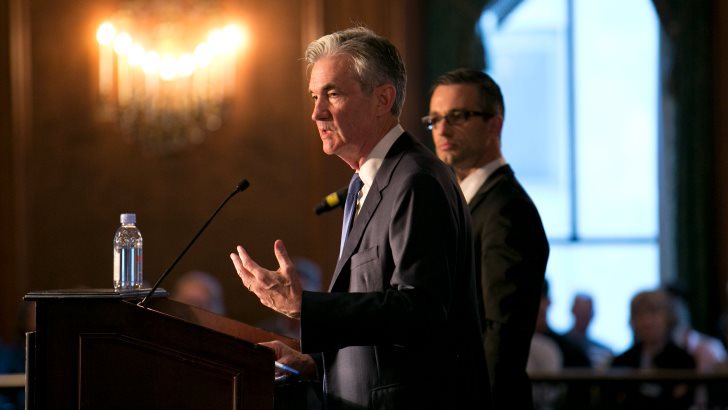
U.S. stocks experienced a notable downturn following comments from Federal Reserve Chairman Jerome Powell, who suggested that the central bank is in no hurry to reduce interest rates despite recent economic headwinds. Powell’s remarks, delivered during a speech to business leaders in Dallas, outlined a more cautious approach to future rate cuts, catching investors off guard and prompting a broad sell-off across major indices.
Powell’s Optimism on Economic Growth
In his speech, Powell emphasized the resilience of the U.S. economy, calling it the strongest among major global economies. He pointed to continued robust economic growth as a key factor allowing the Fed to take its time before making any decisions on rate reductions. "The economy is not sending any signals that we need to be in a hurry to lower rates," Powell said, suggesting that the current pace of growth gives the central bank room to move more deliberately.
Despite recent softness in job growth, which Powell attributed largely to temporary factors such as labor strikes and storm-related disruptions in the Southeast, he maintained an optimistic outlook. Nonfarm payrolls added just 12,000 jobs in October, a sharp slowdown, but Powell downplayed the significance of this figure, noting that the labor market overall remains relatively healthy. Unemployment, although having risen slightly, is still low by historical standards and has stabilized in recent months.
Market Reaction: A Disappointment for Bulls
Investors had been hoping for clearer signs that the Fed would begin lowering rates sooner rather than later, especially following the central bank’s 50 basis point rate cut in September. That move, which had been intended to stave off a potential economic slowdown, had fueled optimism that the Fed might adopt a more dovish stance heading into 2024. Powell’s latest comments dashed those hopes, as he reiterated that the strength of the U.S. economy doesn’t justify immediate cuts.
As a result, markets reacted negatively to the news. The major U.S. stock indices—led by the S&P 500 and the Nasdaq—fell sharply as traders adjusted their expectations for monetary policy. Growth stocks, particularly in the tech sector, were hit the hardest. These stocks are typically more sensitive to interest rate expectations because higher borrowing costs reduce the present value of their future earnings.
Why Did the Fed Cut Rates in September?
Powell’s latest remarks also prompted questions about why the Fed decided to cut rates by 50 basis points in September if the economy is, by his own account, so resilient. The September cut was largely seen as a preemptive measure to guard against downside risks, including slowing global growth, geopolitical tensions, and inflation uncertainty. At the time, concerns were growing about the U.S. economy losing momentum, and the Fed acted to provide a cushion against these risks.
However, with inflation having moderated and economic data showing resilience in consumer spending and overall growth, Powell’s tone has shifted. His latest comments suggest that the September cut may have been more of an insurance policy than the beginning of a prolonged easing cycle. Now, with the U.S. economy showing strength, Powell and his colleagues at the Fed are signaling that they can afford to be patient before making any further moves on rates.
Outlook: Volatility Ahead
The stock market’s downside movement reflects growing uncertainty about the Fed’s future actions. With Powell’s message clear that policymakers will not rush into rate cuts, investors may have to recalibrate their strategies for a longer period of elevated borrowing costs.
This period of uncertainty could lead to more market volatility in the near term as investors weigh the Fed’s cautious stance against ongoing risks such as slowing global growth and the potential for inflation to remain sticky. As traders digest Powell’s remarks, attention will shift to upcoming economic data and future Fed meetings for further clarity on the central bank’s policy trajectory.
In the meantime, sectors like technology, real estate, and consumer discretionary, which are more sensitive to interest rate changes, could continue to face pressure as the prospect of lower rates moves further into the distance. Investors will be watching closely to see if economic data aligns with Powell’s upbeat assessment, or if signs of weakness begin to emerge that might force the Fed to reconsider its slow approach to rate cuts.




















